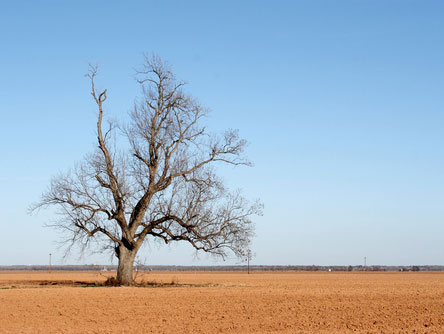This story was produced by The Atlantic, as part of the Climate Desk collaboration.
Last year, the Mississippi River flooded. Major storms combined with melting snow brought the waterway more than 56 feet above river stage in May. The Army Corps of Engineers lifted the floodgates of the Morganza Spillway, deliberately inundating some 3,000 square miles of rural Louisiana to spare worse damage in New Orleans and Baton Rouge. In August of last year, NASA’s Landsat 5 satellite took a picture of the swollen river. Here’s what it saw:
This year it’s an entirely different story. At the end of last month, more than 60 percent of the lower 48 states were in drought, and the might Mississippi was running low. An 11-mile stretch of river has been closed on and off since August 11, and earlier this week nearly 100 boats lined up near Greenville, Mississippi, waiting to pass. Water levels near Memphis are ranging from 2.4 to 8.3 feet below river stage, compared with 11.7 feet above at this time last year. To make matters worse, the floods of last year deposited huge amounts of sediment on the river bed, reconfiguring the existing channels.
Again NASA was there to capture the view from space, this time with Landsat 7. Here’s that image:
Officials from the Army Corps of Engineers say that the low water levels—and attending barge traffic jams, closed ports, and closed river sections—will continue until October. The direct costs are staggering: NASA explains that a loss of just one inch of draft can require a ship to run with 17 tons less cargo. A major drought in 1988, one that set the record for water level at minus 10.7 feet, brought an estimated $1 billion in losses to the barge industry that year.
Of course the indirect costs—the lost revenue to the ports along the way, to the businesses whose shipments are delayed, not to mention the toll on the ecosystems that depend on water from the river—those costs are much, much greater.
via @pbump
















